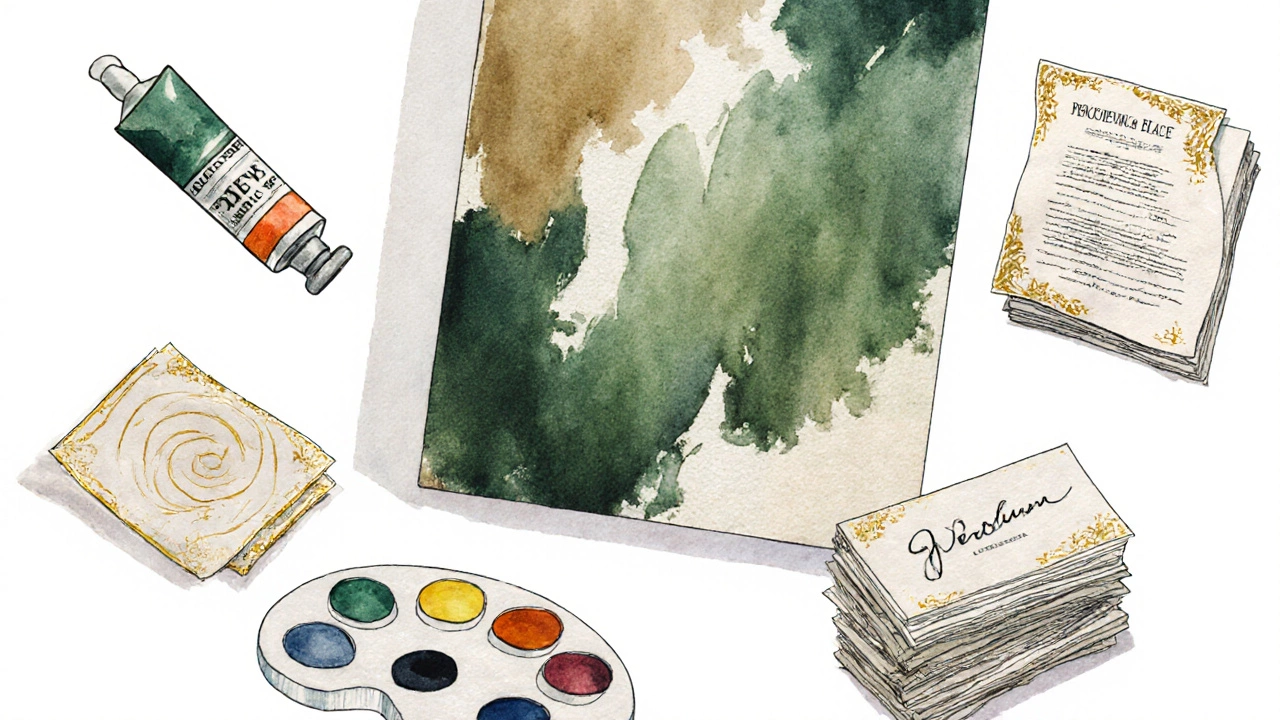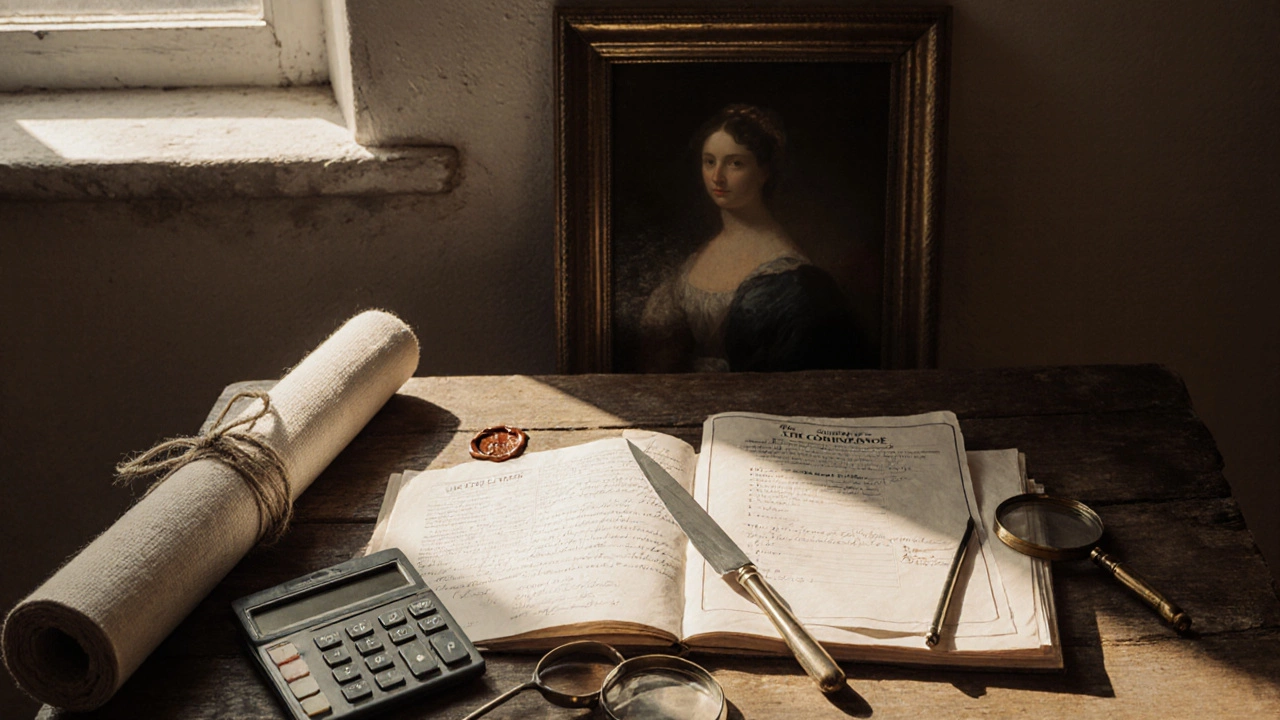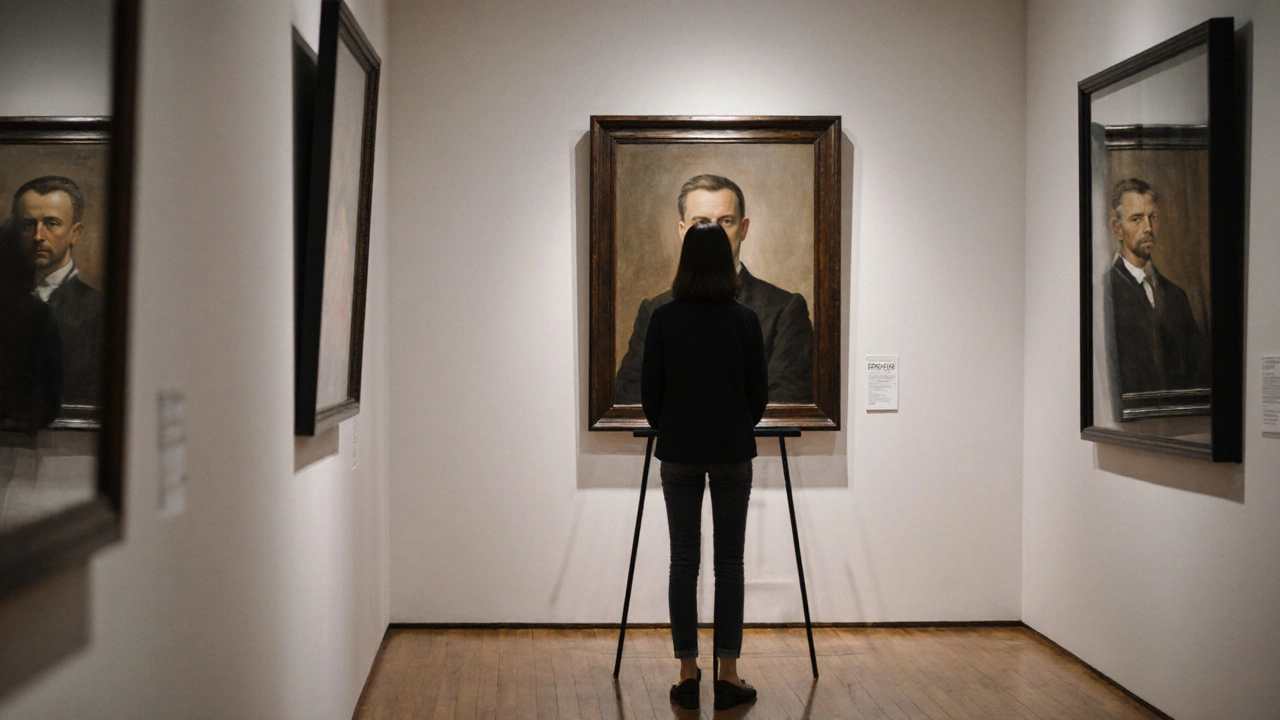Painting Price Calculator
Estimate Your Painting's Value
Enter the painting's details to get an estimated price range based on current market data.
Enter details to see price estimate
Important Note: This calculator provides a general estimate based on industry averages. Actual prices vary based on provenance, condition, market demand, and other factors. Always consult professional appraisers for high-value pieces.
You walk into a gallery, spot a portrait that makes you pause, and wonder - is this price fair? Figuring out a reasonable painting price isn’t magic; it’s a mix of numbers, research, and a dash of gut feeling. Below you’ll learn what really moves the cost, how to size up a piece quickly, and which red flags to dodge.
Quick Takeaways
- Size, medium, and artist reputation account for 60‑70% of the price.
- Oil portraits from emerging artists often start at $1,000‑$3,000; established names can soar above $50,000.
- Buy through reputable galleries or auction houses for provenance; online marketplaces need extra due‑diligence.
- Check recent sales of similar works; use that as a benchmark.
- Ask for a written condition report and authentication before you sign.
Understanding What a Painting Is
When we talk about a Painting is a visual artwork created with pigments applied to a surface such as canvas, wood, or paper, we’re dealing with a product that carries both material and creative value. The material side - canvas, wood panel, paper - has a clear cost, while the creative side - the artist’s vision, technique, and reputation - adds the intangible premium that makes a painting more than just a decorated sheet.
Key Drivers Behind a Painting’s Cost
Think of a painting’s price tag as a puzzle. Each piece of the puzzle adds up to the final figure.
- Size and surface. Larger works need more canvas, more paint, and more studio time.
- Medium. Oil, acrylic, watercolor, and digital prints each have distinct material costs and market perceptions.
- Artist reputation. A name that has shown in major museums or sold at auction commands higher fees.
- Provenance. A documented history of ownership can add 10‑30% to the price.
- Subject matter. Portraits, especially commissioned ones, often carry a premium over abstract pieces.
- Market channel. Gallery‑represented works include dealer commissions; auction‑sold pieces might have buyer’s premiums.
- Condition. Restorations, cracks, or fading can slash value dramatically.
Size and Medium Explained
The first visible numbers you’ll see are dimensions. A 24×36‑inch oil portrait typically costs at least three times a 12×16‑inch watercolor. Here’s why.
- Canvas is a sturdy, woven fabric that can handle heavy oil layers; it adds material cost and preparation time.
- Oil paint requires solvents, drying oils, and often a varnish finish, all of which raise the base price.
- Acrylic dries faster and is less expensive than oil, but many collectors still view oil as a premium medium.
- Watercolor uses paper and fewer pigments, keeping material costs low; however, skilled watercolorists can still command high fees for mastery.
- Digital prints on archival paper may be inexpensive to produce, but limited edition runs from a known artist can fetch prices comparable to small oil works.
Artist Reputation and Provenance
A painting by a Artist who has shown at a major museum or gallery will almost always beat a similarly sized piece by an unknown creator. Reputation is built through exhibitions, critical reviews, and sales history.
Provenance - the documented chain of ownership - works like a resume for the artwork. A clear record that the piece was owned by a collector, displayed in a notable exhibition, and passed through a reputable Gallery can lift the price by a noticeable margin. Conversely, a missing or sketchy provenance can scare off buyers and drive the price down.

Subject, Complexity, and Commissioned Works
Portraits, especially commissioned ones, carry an extra layer of cost. The artist must capture a likeness, often working from multiple sittings or photographs. That time investment can add $500‑$2,000 on top of the base price, depending on the artist’s rate.
Complex scenes - intricate backgrounds, detailed textures, or multiple figures - also increase labor. An artist may charge per hour; a typical skilled painter bills $30‑$100 per hour in the U.S. in 2025.
Where You Buy: Gallery, Auction House, or Online Marketplace
Each sales channel tacks on its own fees.
- Gallery representation often means a 30‑50% commission, but you get the benefit of expert curation and a guarantee of authenticity.
- Auction house sales add a buyer’s premium (usually 20‑25%) and a seller’s commission. However, auctions can push prices higher if bidding gets competitive.
- Online marketplaces like Artsy or Saatchi Art lower overhead, but you must verify the seller’s credibility and request high‑resolution images, condition reports, and, if possible, an independent appraisal.
Regional Variations
Art markets differ by city and country. In New York, a mid‑career oil portrait may start at $5,000, while the same work in a smaller market like Portland could be $2,000‑$3,000. Internationally, European capitals often have higher baseline prices due to historic collector bases.
How to Gauge a Fair Price - Step‑by‑Step
- Identify the basic attributes: size, medium, subject, and condition.
- Research the artist’s recent sales. Use auction databases (e.g., Sotheby’s, Christie’s) or gallery archives.
- Find comparable works (same medium, similar size, comparable reputation) and note their selling prices.
- Adjust for location and sales channel - add typical dealer commissions or buyer’s premiums.
- Request a written condition report and provenance documentation.
- Set a budget ceiling based on the adjusted comparable range. If the seller’s price exceeds that by more than 15‑20%, ask for justification or negotiate.

Sample Price Ranges (2025 USD)
| Medium | Size (inches) | Emerging Artist | Mid‑Career Artist | Established Artist |
|---|---|---|---|---|
| Oil (portrait) | 12×16 | $1,200‑$2,500 | $3,000‑$8,000 | $15,000‑$60,000+ |
| Acrylic (landscape) | 24×30 | $800‑$1,800 | $2,500‑$6,000 | $10,000‑$35,000 |
| Watercolor (still life) | 8×10 | $300‑$700 | $900‑$2,200 | $4,000‑$12,000 |
| Limited‑edition print | Variable | $150‑$400 | $500‑$1,200 | $2,000‑$7,000 |
These numbers are averages. Individual pieces can fall outside the ranges when they feature unique stories, rare materials, or exceptional demand.
Common Pitfalls to Avoid
- Skipping provenance. A beautiful painting with no ownership record can be a legal nightmare.
- Ignoring condition reports. Hidden repairs or restoration can cost you later.
- Paying solely based on size. A small, well‑executed oil can outrank a large, mediocre acrylic.
- Overlooking market trends. Certain styles (e.g., hyper‑realistic portraiture) may be at a peak now but could dip in a few years.
- Not budgeting for extra fees. Dealer commissions, shipping, insurance, and framing add 10‑30% to the final out‑of‑pocket cost.
Checklist Before You Buy
- Confirm dimensions and medium.
- Verify artist’s name, exhibition history, and recent sales.
- Ask for provenance documents and a condition report.
- Identify the sales channel’s fees (commission, buyer’s premium, shipping).
- Compare with at least three similar recent sales.
- Set a maximum budget and stick to it.
Frequently Asked Questions
What factors most affect a painting’s price?
Size, medium, artist reputation, provenance, subject matter, condition, and the sales channel (gallery, auction, online) are the biggest price drivers.
Is it worth paying more for a gallery‑represented painting?
Usually yes. Galleries vet the artist, provide authentication, and often insure the work during transport. The extra commission buys you confidence and resale value.
How can I verify a painting’s provenance?
Ask the seller for a provenance paper trail: exhibition catalogues, previous sale invoices, or letters from former owners. You can also check auction house archives or use databases like ArtNet for historical sales.
Do smaller paintings ever sell for high prices?
Absolutely. A tiny masterpiece by a recognized artist can fetch millions if the work is historically significant or part of a limited series.
Should I get an independent appraisal before buying?
It’s a smart move, especially for pieces over $5,000. An accredited appraiser will assess authenticity, condition, and market value, giving you a solid negotiation baseline.

